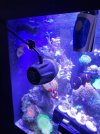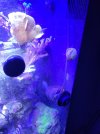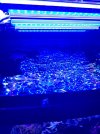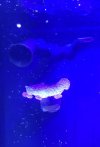Consider measuring alk daily and watch how it drops, that will help you gauge how much water to change and when.
Edit, you are already dosing, then what are you trying to dilute or replenish with the water changes. Measure that and change based on that parameter movement.
I always have had higher p04 since I had the tank, weekly water changes are solely to target p04 not really for any other specific reason.
Haven't had any type of alage in the tank in 2 years despite high po4. Only goal of droping them is for sps. Otherwise I would probably not be worried about anything seeing everything is happy except a few of the sps.
Even with weekly water changes I can't keep calc alkalinity and mag from droping hence the dosing.




